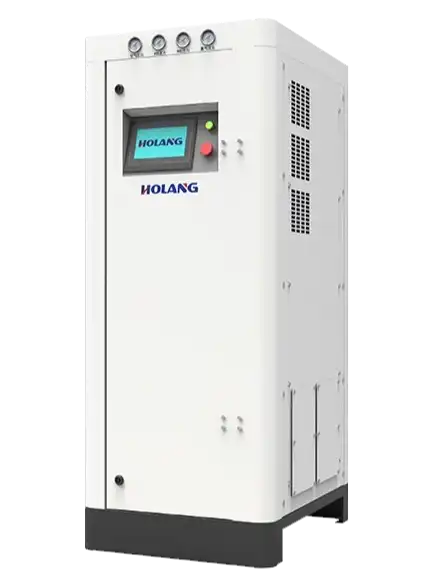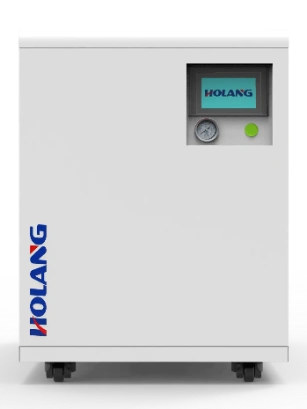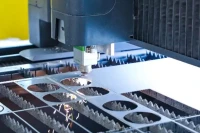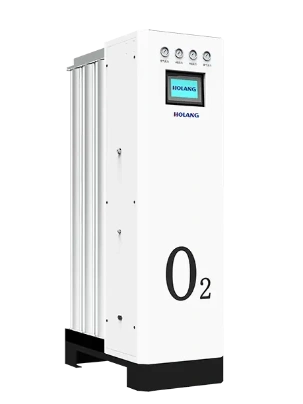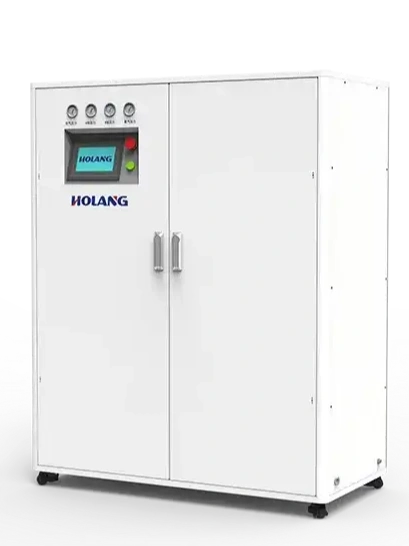In every factory that depends on nitrogen, stability isn’t luck—it’s the result of thoughtful design and discipline.
At HOLANG Tech, a professional nitrogen generator manufacturer, we’ve learned that true reliability begins long before the system starts producing gas. It starts when we ask the right questions and turn ideas into measurable engineering logic.
This article walks through that logic—how we transform raw air into pure nitrogen through clear data, careful design, and patient testing.
1. Defining What “Stable” Really Means
Clients often come to us saying, “We need a nitrogen generator.” That’s where our job begins. A nitrogen system isn’t ordered like a pump or a filter. It’s built around real numbers—purity level, flow rate, pressure, power, and even how often the line stops. We always start with a table, not a sentence.
| Parameter | Typical Range | Why It Matters |
|---|---|---|
| Nitrogen Purity Level | 95–99.999% | Electronics, laser cutting, and food packaging all demand different levels |
| Flow Rate | Nm³/h | Based on peak use plus 10–15% margin |
| Pressure | 6–30 bar | Defines compressor size and safety design |
| Environment | Temperature / Humidity / Power | Impacts stability and CMS lifespan |
| Usage Pattern | Continuous or Intermittent | Determines tower switching logic |
When these numbers are clear, the rest of the design has direction. Good nitrogen systems are never improvised—they’re calculated.
2. The Real Work: Turning Air into Nitrogen
Every nitrogen generator works on one simple principle: air already contains 78% nitrogen—you just need to separate it cleanly.
But the process behind that simplicity is what separates a good system from a great one.
At HOLANG, we combine PSA and membrane technologies to cover different needs—industrial, mobile, or laboratory applications.
Each complete nitrogen generation system we build follows six stages that balance efficiency, stability, and cost.
-
Air Compressor — The System’s Heart
A steady nitrogen flow starts with steady air.
The compressor output must be at least 1.6–1.8× the nitrogen flow to maintain pressure. Undersized compressors cause purity drops; oversized ones waste energy. -
Air Treatment — Where Most Problems Begin
We use a three-layer filtration chain (1 μm, 0.01 μm, activated carbon) plus a dryer that keeps the dew point below –40°C.
If air isn’t clean, the rest doesn’t matter—oil and water will poison the carbon molecular sieve, and your nitrogen quality will drift. -
PSA Nitrogen Generator — Precision at Work
In the Pressure Swing Adsorption process, the carbon molecular sieve traps oxygen under high pressure while letting nitrogen molecules pass through.
Two towers alternate rhythmically, generating nitrogen with purities up to 99.999%.
It’s not magic. It’s timing, valve control, and a bit of engineering pride. -
Membrane Nitrogen Generator — Simpler, Faster, Mobile
Membrane technologies use polymer fibers that let oxygen move faster than nitrogen.
The result: 95–99.5% purity, fast startup, and low maintenance. Perfect for on-site jobs where mobility or cost effectiveness matters more than ultra-high purity. -
Storage and Buffers — Keeping the Flow Steady
The tanks in a HOLANG system are sized at 1.2–1.5× of the nitrogen output. They absorb fluctuations during tower switching and maintain smooth delivery pressure. -
Control and Monitoring — Seeing What’s Going On
Our systems track purity, dew point, pressure, and flow rates in real time.
Engineers can access remote alerts and trend reports that make predictive maintenance part of daily operation, not an afterthought.
Every piece matters. Stability is never about buying the most expensive component—it’s about how each module cooperates with the others.
3. From Drawing to Reality: Lessons from the Floor
Once the design is approved, the real world takes over. Different sites mean different challenges—uneven floors, unstable voltage, dusty air.
That’s why site nitrogen generation always includes an adaptation phase.
| Phase | What We Check | Typical Mistake |
|---|---|---|
| Installation | Leveling, pipeline layout, vibration control | Ignoring resonance or using thin supports |
| Electrical Setup | Voltage balance, grounding | Reversed wiring or poor grounding |
| Start-up | Valve tuning, purity tracking | Adjusted too quickly → purity spikes |
| Commissioning | Data recording, curve testing | Missing records = missing insight |
A nitrogen generator that just “turns on” isn’t ready. At HOLANG, we record at least 24 hours of continuous operation—watching how the system “breathes.” Stability must be proven, not promised.
4. Keeping It Efficient: Operation and Maintenance
Once running, a nitrogen generator becomes part of the factory’s bloodstream. The focus shifts from “Can it run?” to “Can it stay efficient?”
Our engineers monitor a few critical signs:
-
Tower switching cycle: Normal 45–60 s. If it speeds up, a valve might leak; if it slows, the adsorbent could be tired.
-
Dew point: Rising levels usually mean filter or dryer fatigue.
-
Purity drift: Often caused by oil from the air compressor or valve delay.
-
Energy load: Reducing inlet pressure by 0.1 MPa can cut energy by 3–5%.
With trend tracking and remote monitoring, clients can maintain stable purity and achieve measurable cost savings. Our systems integrate easily into ISO 50001 energy management programs—data-driven, not reactive.
5. The Long View: Performance Over Time
When we ship a nitrogen system, that’s only the beginning. Our work continues through every cycle and every year of operation.
| Year | Focus Area |
|---|---|
| 1st | Reliability and downtime |
| 2nd | Energy consumption patterns |
| 3rd | Carbon molecular sieve performance |
| 5th | Flow and purity consistency |
A nitrogen system that maintains stable flow and purity for five years is what we call a mature design. That’s why global customers—from semiconductor fabs to food processors—choose HOLANG as their nitrogen generator manufacturer and long-term partner.
Conclusion
Designing a nitrogen system is equal parts calculation and experience. From the first data sheet to the last valve test, HOLANG engineers approach every project with the same goal: make nitrogen generation stable, efficient, and repeatable.
Whether it’s a PSA nitrogen generator for industrial use or a membrane nitrogen generator for portable setups, every system reflects the same belief—that technology should make reliability simple.
Stable nitrogen doesn’t happen by chance. It’s designed, measured, and earned.

